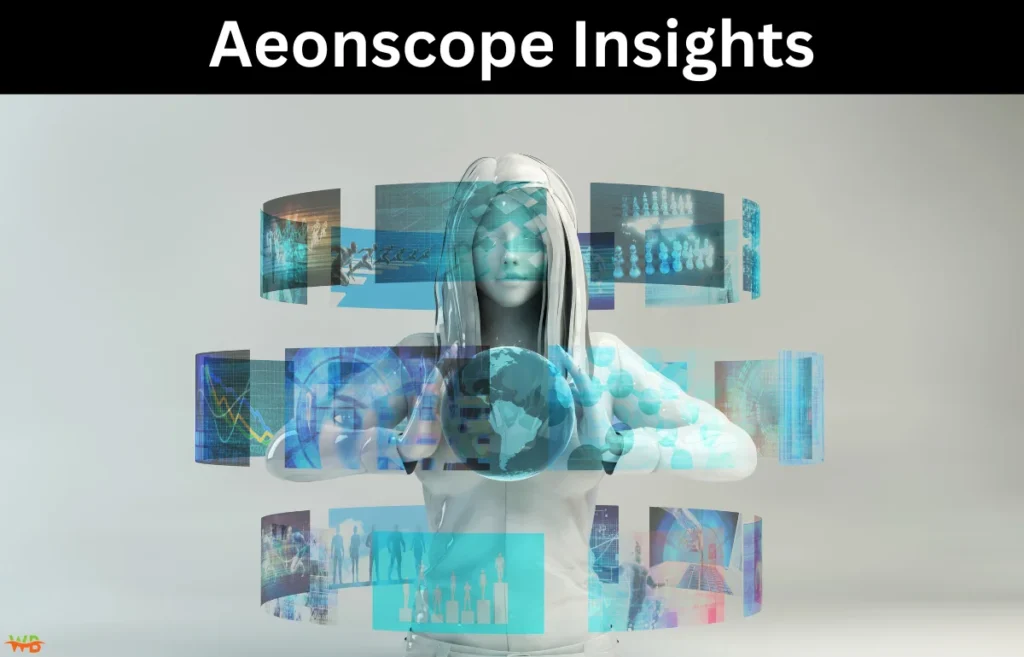In today’s fast-paced world, businesses and individuals alike are constantly looking for ways to predict the future and make well-informed decisions. Offering a structured outlook, Aeonscope Insights breaks down existing data streams to project likely future outcomes. By leveraging various methodologies like data analytics, technology forecasting, and cultural analysis, Aeonscope Insights provides the tools necessary to navigate an increasingly volatile and uncertain world. This article explores the importance of Aeonscope Insights, how it helps in decision-making, and the methodologies that drive its predictive power.
What Is Aeonscope Insights?
At its core, Aeonscope Insights is a strategic framework designed to help businesses, governments, and individuals forecast and prepare for future trends. Rather than relying on guesswork, it draws from diverse disciplines such as data analytics, technological forecasting, and social sciences to provide a clearer picture of what lies ahead. While it doesn’t promise absolute predictions, it offers a valuable way to explore plausible future scenarios and their impacts.
By examining current trends and analyzing complex systems, Aeonscope Insights enables organizations to identify patterns that can guide long-term planning and decision-making. From understanding technological advances to recognizing shifts in societal norms, Aeonscope Insights empowers users to take a proactive approach to the future.
The Importance of Aeonscope Insights in Decision-Making
In an era of rapid change, relying on traditional methods of forecasting can be risky. That’s where Aeonscope Insights shines—by offering a more strategic, data-driven approach to decision-making. Whether you are an entrepreneur, business leader, or policymaker, understanding future trends is crucial for success.
Identifying Market Disruptions
One of the key benefits of Aeonscope Insights is its ability to identify potential market disruptions before they become mainstream. By analyzing signals from emerging technologies, consumer behavior, and geopolitical shifts, organizations can prepare for changes that might otherwise catch them off guard. For instance, the rise of electric vehicles and the decline of fossil fuel dependence were anticipated disruptions that allowed companies like Tesla to capitalize on new market demands early on.
Developing Future-Proof Strategies
A future-proof strategy is one that can adapt and thrive regardless of how the future unfolds. Aeonscope Insights helps organizations develop such strategies by providing foresight into multiple potential outcomes. By considering different future scenarios, businesses can design flexible plans that align with future market conditions, consumer behavior, and technological advancements.
Improving Risk Management
Risk management is all about identifying and mitigating potential threats. With Aeonscope Insights, companies and individuals can assess potential risks well in advance. Whether it’s a sudden market crash or an unforeseen political shift, having a deep understanding of the landscape can lead to better preparedness and the development of effective mitigation strategies.
Driving Innovation
Innovation often arises from the identification of unmet needs and emerging opportunities. Aeonscope Insights helps spot such opportunities by scanning the horizon for weak signals and emerging trends. By understanding what consumers and industries will need in the future, businesses can invest in new technologies, products, and services that cater to these needs.
Methodologies Behind Aeonscope Insights
Creating reliable and actionable Aeonscope Insights requires the use of several key methodologies. These methodologies work together to ensure that insights are not only accurate but also relevant to the ever-changing landscape. Let us analyze the most prevalent approaches in additional detail:
Scenario Planning
Scenario planning, a key tool in the Aeonscope Insights framework, explores diverse future paths by examining a range of hypothetical conditions. For example, you could develop scenarios about the impact of a major technological breakthrough, such as the widespread adoption of AI, or the economic consequences of a geopolitical event. This technique helps organizations prepare for a variety of possible outcomes rather than relying on a single prediction.
The Delphi Method
The Delphi method involves gathering expert opinions about future trends. A panel of experts provides forecasts and insights, which are then refined through multiple rounds of feedback. The panel reviews and refines opinions in several rounds to achieve a unified conclusion. This methodology ensures that Aeonscope Insights reflects the most up-to-date and comprehensive viewpoints from people who have deep knowledge of specific fields.
Trend Extrapolation
Through analyzing past and present trends, trend extrapolation helps to project what might occur in the future. It relies on the assumption that trends tend to continue in a predictable manner, though it’s crucial to recognize that disruptions can and do occur. Aeonscope Insights uses this method to project trends in technology, economics, and social behavior.
Horizon Scanning
Horizon scanning is the process of actively monitoring emerging trends and weak signals that may indicate a shift in the environment. Whether it’s scientific research, market reports, or social media, horizon scanning helps identify potential disruptions early on. By staying ahead of these trends, Aeonscope Insights enables individuals and organizations to make informed decisions before changes fully materialize.
Challenges and Limitations of Aeonscope Insights
While Aeonscope Insights provides invaluable foresight, it is not without its challenges. The future is inherently uncertain, and no method can offer complete accuracy. Below are some of the limitations:
Uncertainty
The future is full of unknowns, and even the most sophisticated methodologies can’t predict every outcome. Unexpected events, such as a global pandemic or an economic collapse, can dramatically alter the trajectory of markets and industries.
Bias
The way data is interpreted and predictions are formulated can be influenced by personal biases. It’s crucial to recognize and mitigate these biases to ensure that the insights provided by Aeonscope Insights are as objective and accurate as possible.
Data Quality and Availability
Reliable data is the foundation of any forecasting method. However, in some cases, data may be incomplete, outdated, or unavailable. This can limit the effectiveness of Aeonscope Insights and impact the accuracy of the predictions made.
Complexity
The world is a complex and interconnected system, and simplifying it into models for forecasting can sometimes lead to inaccuracies. Although Aeonscope Insights tries to capture as many variables as possible, it’s still necessary to be cautious about the limitations of any model.
Embracing the Power of Aeonscope Insights
In closing, Aeonscope Insights is a vital asset for forecasting future trends and helping individuals and organizations make informed choices in a dynamic world. By utilizing methodologies such as scenario planning, the Delphi method, and horizon scanning, organizations and individuals can navigate uncertainties with confidence. While the challenges of uncertainty, bias, and data limitations exist, the benefits of adopting a forward-looking strategy are undeniable. In an age of rapid change, those who embrace Aeonscope Insights will be better equipped to thrive in the future.
FAQs about Aeonscope Insights
1. What makes trend forecasting different from traditional business forecasting?
- Trend forecasting focuses on identifying emerging patterns and shifts that could influence future outcomes, often looking years ahead. Traditional business forecasting typically uses historical data to predict more immediate, short-term trends. The key difference lies in the scope—trend forecasting is about exploring broader, long-term possibilities, while traditional forecasting centers on present conditions and near-future projections.
2. How do expert opinions play a role in predicting future trends?
- Expert opinions are invaluable because they bring deep domain knowledge and insights into specific fields. These experts often have firsthand experience and a nuanced understanding of industry-specific shifts that can shape the future. By gathering perspectives from multiple experts, organizations can gain a more comprehensive view of the factors that might influence future developments.
3. Can scenario planning be applied to industries outside of business?
- Yes, scenario planning is versatile and can be applied to various sectors, including government, healthcare, and education. For example, in healthcare, scenario planning can help anticipate the effects of new medical technologies, public health crises, or changes in patient demographics. Its broad applicability makes it a powerful tool for organizations across industries to prepare for various potential outcomes.
4. What is the role of weak signals in identifying future disruptions?
- Weak signals point to emerging changes that have yet to be recognized by the larger community. They often take the form of minor trends, niche innovations, or small shifts in behavior. By identifying these weak signals early, organizations can gain a competitive edge, allowing them to respond to disruptions before they become mainstream and potentially avoid risks associated with unforeseen changes.
5. How can organizations effectively mitigate biases when predicting future outcomes?
- Mitigating biases involves using a combination of methods, including gathering diverse viewpoints, relying on data-driven analysis, and utilizing structured decision-making techniques. It’s important to constantly question assumptions and encourage dissenting opinions within forecasting teams. Additionally, regularly revisiting and revising predictions based on new information can help minimize the impact of cognitive biases that might skew forecasts.
Learn about trwho.com Tech

Ton Roobprom is an experienced writer focused on practical advice across technology, business, travel, beauty, lifestyle, and home improvements. He specializes in distilling complex subjects into clear, actionable insights to help you enhance your daily life.
Discover more from Wellbeing Junction
Subscribe to get the latest posts sent to your email.


